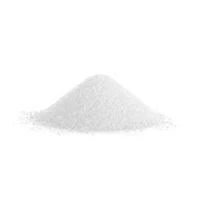
Applications and Benefits of Sodium Dichloroisocyanurate in Various Industries
The Versatile Uses of Sodium Dichloroisocyanurate
Sodium dichloroisocyanurate (often abbreviated as NaDCC) is an organic compound recognized for its broad spectrum of applications, primarily in disinfection and sanitation. As a white crystalline powder, it is both a stable and effective chlorine-release compound, making it a preferred choice in numerous industrial and domestic applications.
Disinfection and Water Treatment
One of the primary uses of sodium dichloroisocyanurate is in the disinfection of water. Its efficacy in killing bacteria, viruses, and other pathogens makes it an essential agent in ensuring the safety of drinking water. Sodium dichloroisocyanurate can effectively dissolve in water and release chlorine gradually, providing sustained disinfection over time. This attribute makes it an ideal choice for treating water in both municipal systems and various recreational facilities, such as swimming pools and spas.
The compound is widely used in developing countries where access to clean water may be limited. Portable water treatment kits often use NaDCC for emergency disinfection, allowing communities to convert untreated water into safe drinking water. As global concerns about waterborne diseases rise, the importance of sodium dichloroisocyanurate in combating these threats cannot be overstated.
Household Cleaning Products
Another significant application of sodium dichloroisocyanurate is in household cleaning products. Many cleaning solutions and disinfecting wipes incorporate this compound due to its high effectiveness against a variety of germs. It is particularly favored for disinfecting surfaces in kitchens and bathrooms, where hygiene is paramount. By using products with sodium dichloroisocyanurate, consumers can ensure that their homes are not only clean but also free from harmful pathogens.
Waste Water Treatment
sodium dichloroisocyanurate uses

In addition to its uses in potable water treatment, sodium dichloroisocyanurate plays a critical role in waste water treatment processes. It assists in breaking down organic matter and controlling odors, making wastewater management more efficient. The gradual release of chlorine helps maintain a clean and safe environment in sewage treatment systems and industrial waste treatment facilities. This application is vital for regulating environmental pollution, ensuring that treated water released into natural bodies remains free of harmful microorganisms.
Agricultural Applications
Sodium dichloroisocyanurate also finds utility in agriculture. It is used as a disinfectant for equipment, tools, and storage areas, effectively managing the health risks associated with crop production and livestock farming. The compound aids in preventing disease outbreaks that can devastate crops and herds. Moreover, NaDCC is being explored for use in post-harvest treatments to increase shelf life and reduce spoilage of fruits and vegetables, further promoting food safety.
Veterinary Medicine
In veterinary medicine, sodium dichloroisocyanurate is employed in disinfecting animal housing, ensuring that pathogens that could affect animal health are effectively managed. This compound helps create a safe environment in veterinary clinics, animal shelters, and farms, contributing to the overall well-being of livestock and pets alike.
Conclusion
Sodium dichloroisocyanurate's versatility makes it an invaluable compound in a variety of fields. Its applications span from water treatment and household cleaning to agriculture and veterinary care, all of which highlight its role in enhancing public health and safety. As advancements in science and technology continue to evolve, the potential uses of sodium dichloroisocyanurate are likely to expand, reinforcing its significance in maintaining hygiene and sanitation across multiple sectors. Given its effectiveness and stability, NaDCC will likely remain a critical tool in the ongoing effort to combat microbial threats and promote health in our ever-challenging environments.
-
Pure Sodium Dichloroisocyanurate Dihydrate | Powerful DisinfectantNewsAug.29,2025
-
Industrial Chemicals: Quality & Purity for Every IndustryNewsAug.28,2025
-
Nitrile Rubber Honoring Strict Production StandardsNewsAug.22,2025
-
Aspartame Ingredients Honoring Food Safety ValuesNewsAug.22,2025
-
Fertilizer for Balanced Plant NutritionNewsAug.22,2025
-
Cyanide Gold Processing with High Purity AdditivesNewsAug.22,2025
-
Formic Acid in Textile Dyeing ApplicationsNewsAug.22,2025
Hebei Tenger Chemical Technology Co., Ltd. focuses on the chemical industry and is committed to the export service of chemical raw materials.
-

view more DiethanolisopropanolamineIn the ever-growing field of chemical solutions, diethanolisopropanolamine (DEIPA) stands out as a versatile and important compound. Due to its unique chemical structure and properties, DEIPA is of interest to various industries including construction, personal care, and agriculture. -

view more TriisopropanolamineTriisopropanolamine (TIPA) alkanol amine substance, is a kind of alcohol amine compound with amino and alcohol hydroxyl, and because of its molecules contains both amino and hydroxyl. -

view more Tetramethyl Thiuram DisulfideTetramethyl thiuram disulfide, also known as TMTD, is a white to light-yellow powder with a distinct sulfur-like odor. It is soluble in organic solvents such as benzene, acetone, and ethyl acetate, making it highly versatile for use in different formulations. TMTD is known for its excellent vulcanization acceleration properties, which makes it a key ingredient in the production of rubber products. Additionally, it acts as an effective fungicide and bactericide, making it valuable in agricultural applications. Its high purity and stability ensure consistent performance, making it a preferred choice for manufacturers across various industries.





